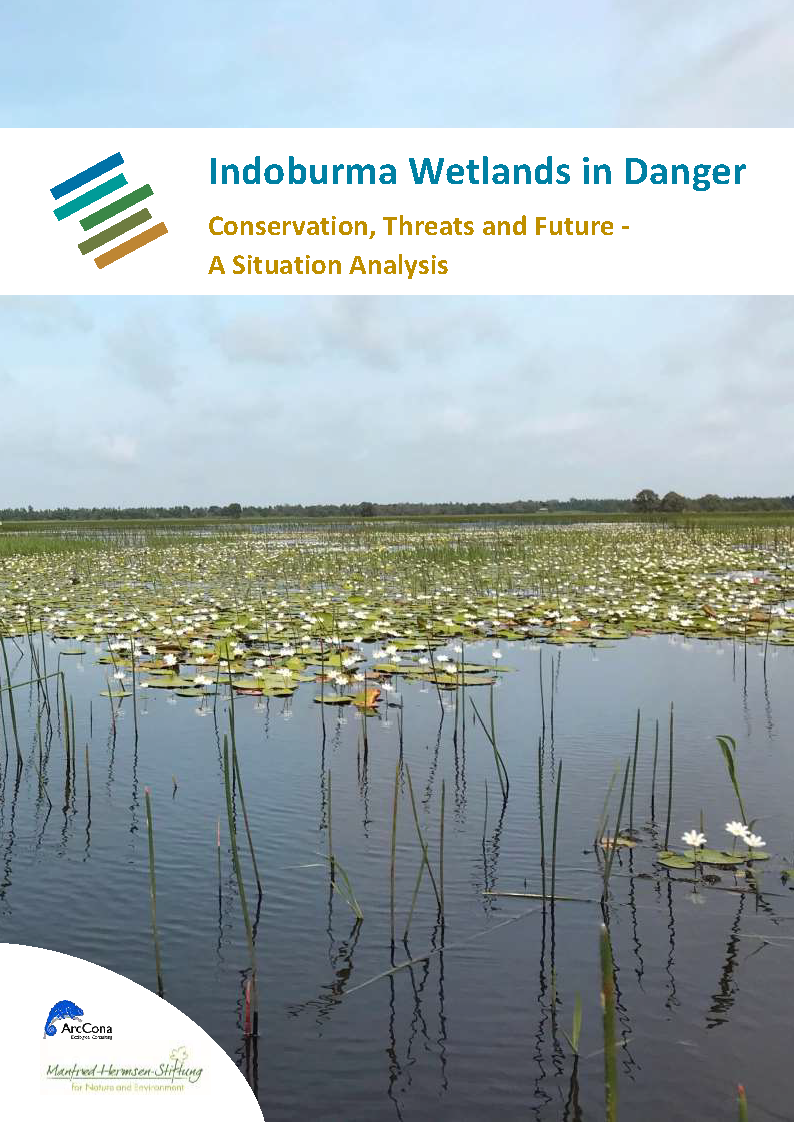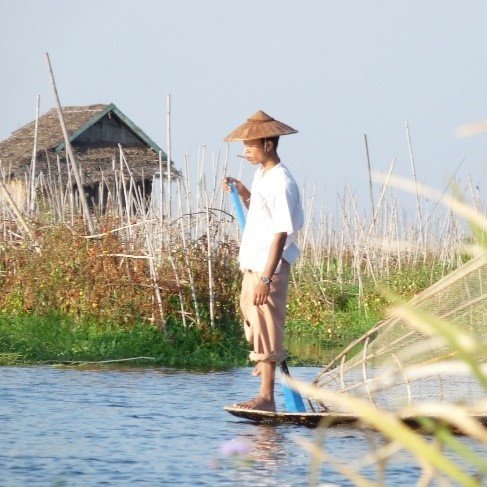Indo-Burma wetlands
Conservation of key freshwater and coastal ecosystems, biodiversity and ecosystem services
In Indoburma, the foundation Manfred-Hermsen-Stiftung has been engaged in wetland conservation for more than 12 years, primarily in Myanmar. With the support of the foundation, five new Ramsar sites and two Biosphere Reserves have been created. This report is taking stock of the existing wetlands and their conservation status and serves as guidance for decision makers and as a reference for scientists and conservationists.
 We are facing a global biodiversity, climate and water crisis which all three play out prominently in Cambodia, Laos, Myanmar, Thailand and Vietnam. Safeguarding and restoring wetlands are crucial tasks in addressing the crisis and preparing for a warming region. The changing climate will put additional pressure on all wetlands, habitats and species, compromising all ecosystem services and threatening livelihoods. A dedicated and coordinated response within the region is required to prepare, adapt and mitigate for the changes that have happened and are forecasted for the region.
We are facing a global biodiversity, climate and water crisis which all three play out prominently in Cambodia, Laos, Myanmar, Thailand and Vietnam. Safeguarding and restoring wetlands are crucial tasks in addressing the crisis and preparing for a warming region. The changing climate will put additional pressure on all wetlands, habitats and species, compromising all ecosystem services and threatening livelihoods. A dedicated and coordinated response within the region is required to prepare, adapt and mitigate for the changes that have happened and are forecasted for the region.
The Indo-Burma Wetlands in Danger Report is the first of its kind to look at the current status, trends and prospects of wetlands in all five countries of the Indo-Burma region in close detail. It looks at wetland biodiversity as well as the crucial ecosystem services provided by wetlands. It also considers the key drivers of change, the toolkits available and the management responses implemented by communities, governments and NGOs in response to the deteriorating situation of Indo-Burma’s wetlands.
By 2021, Cambodia, Laos, Myanmar, Thailand and Vietnam have designated 37 Ramsar sites and listed three additional Flyway Network Sites, representing the key wetlands in the region. All five countries share a set of common river basins, the same water, the same fish and the same migratory species. They also share and rely on the ecosystem services of these sites.
For all Ramsar sites, interviews with wetland experts, rangers, NGO representatives and government agencies and others were conducted. In addition, several published and unpublished reports have been used to compile an assessment of the 40 Ramsar sites as well as the overall situation of wetlands in Indo-Burma.
Thailand and Vietnam are coming to realise some of the severe negative consequences of past development pathways for wetlands and are now taking action to change course. The other three countries in the region face a choice, to follow the same development pathway or to choose a different, more sustainable route.
This Wetland report aims to provide some guidance and recommendations to help countries and communities in addressing the increasing numbers of challenges they face, while safeguarding vital ecosystem services and biodiversity, securing livelihoods for millions of people living with and near wetlands.


